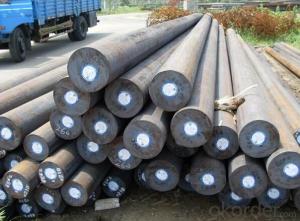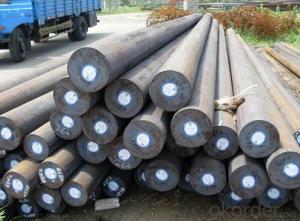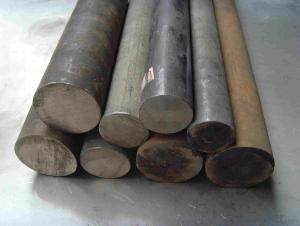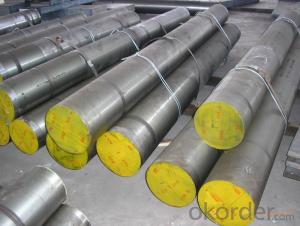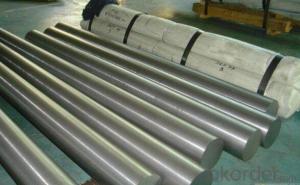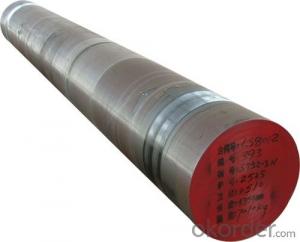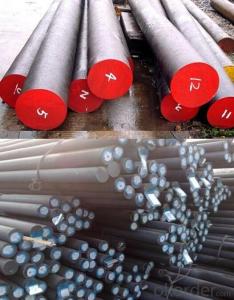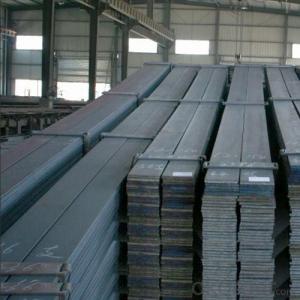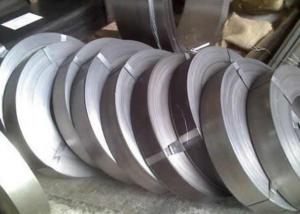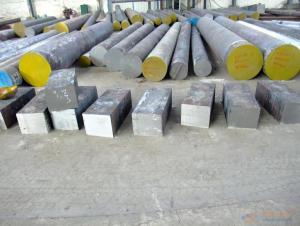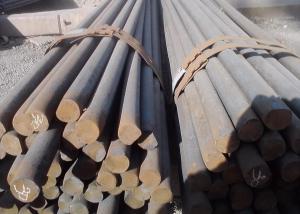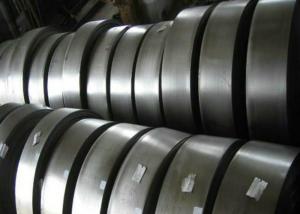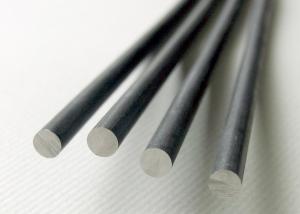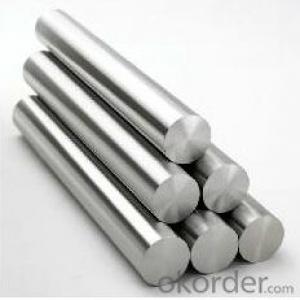Alloy Steel Cr40,Steel Material,40cr Steel Specification
- Loading Port:
- China main port
- Payment Terms:
- TT or LC
- Min Order Qty:
- 30 m.t.
- Supply Capability:
- 10000 m.t./month
OKorder Service Pledge
OKorder Financial Service
You Might Also Like
Specification
Alloy Steel Cr40,Steel Material,40cr Steel Specification
Product information:
| Alloy Steel Cr40,Steel Material,40cr Steel Specification | |||||||||
| 1.Specifications of 40Cr Steel | |||||||||
| Round bar | Diameter(mm) | Length (mm) | |||||||
| 20~800 | 3000~5800 | ||||||||
| Plate | Thickness(mm) | Width (mm) | Length (mm) | ||||||
| Max:800 | 205~800 | 2000~4000 | |||||||
| The specification can be customized. | |||||||||
| 2.Chemical compositon(%) of 40Cr Steel | |||||||||
| Standard | C | Mn | Si | Cr | Mo | P | S | ||
| Number | Ni | ||||||||
| GB | 42CrMo | 0.38~0.45 | 0.50~0.8 | 0.17~0.37 | 0.9~1.2 | 0.15~0.25 | ≤0.035 | ≤0.035 | ≤0.3 |
| AISI | 4140 | 0.40~0.45 | 0.75~1.0 | 0.15~0.35 | 0.8~1.1 | 0.15~0.25 | ≤0.035 | ≤0.040 | |
| JIS | SCM440 | 0.38~0.43 | 0.60~0.9 | 0.15~0.35 | 0.9~1.2 | 0.15~0.30 | ≤0.030 | ≤0.030 | ≤0.25 |
| EN (DIN) | 1.7225 | 0.38~0.45 | 0.60~0.9 | ≤0.40 | 0.9~1.2 | 0.15~0.30 | ≤0.025 | ≤0.035 | |
| 4.Heat treatment of 40Cr Steel | |||||||||
| Forging:1100~900°C | |||||||||
| Normalization:860~880°C | |||||||||
| Subcritical annealing:680~720°C | |||||||||
| Isothermal annealing:830~900 670x3h°C | |||||||||
| Hardening:830~860 oil | |||||||||
| Tempering:550~650°C | |||||||||
| 5.Machanical Properties | |||||||||
| Tensile str. (N/mm2):1080 | |||||||||
| Yield point (N/mm2):930 | |||||||||
| Elongation (%):12 | |||||||||
| Contraction (%):45 | |||||||||
| Impack work (J/cm2):63 | |||||||||
| Hardness (HB):217 | |||||||||
| 5.Characteristic of 40Cr Steel | |||||||||
| Chromium molybdenum high tensile steel with yield strength of 550N/mm2. | |||||||||
| Chromium renders steel oil hardenable and increase hardenability. | |||||||||
| Weldability suffers with increasing chromium content. | |||||||||
| High temperature strength and high pressure hydrogenation properties are | |||||||||
| promoted by chromium and molybdenum. | |||||||||
| Molybdenum significantly reduces temper brittleness. | |||||||||
Product show
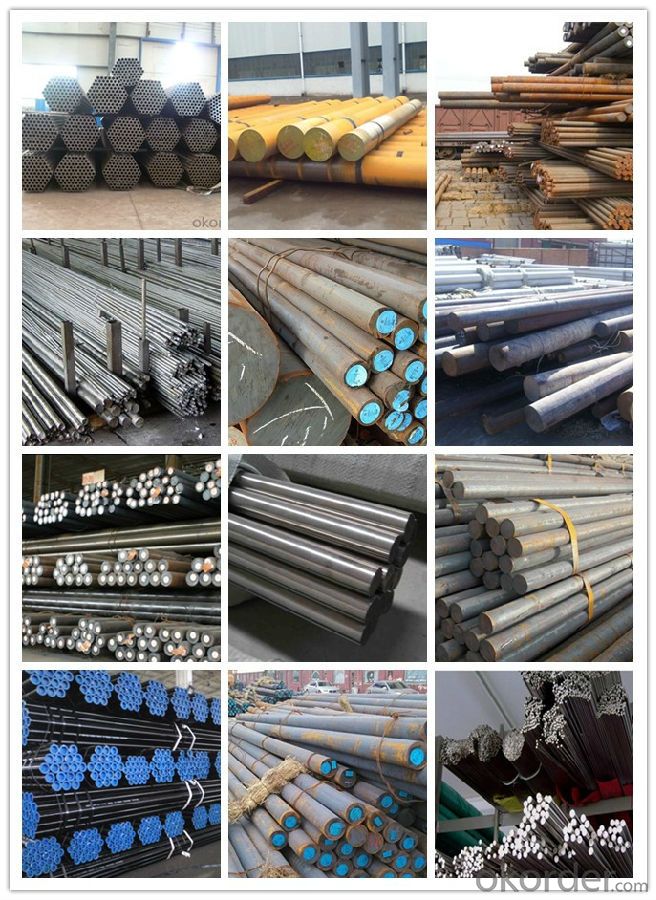
Workshop show
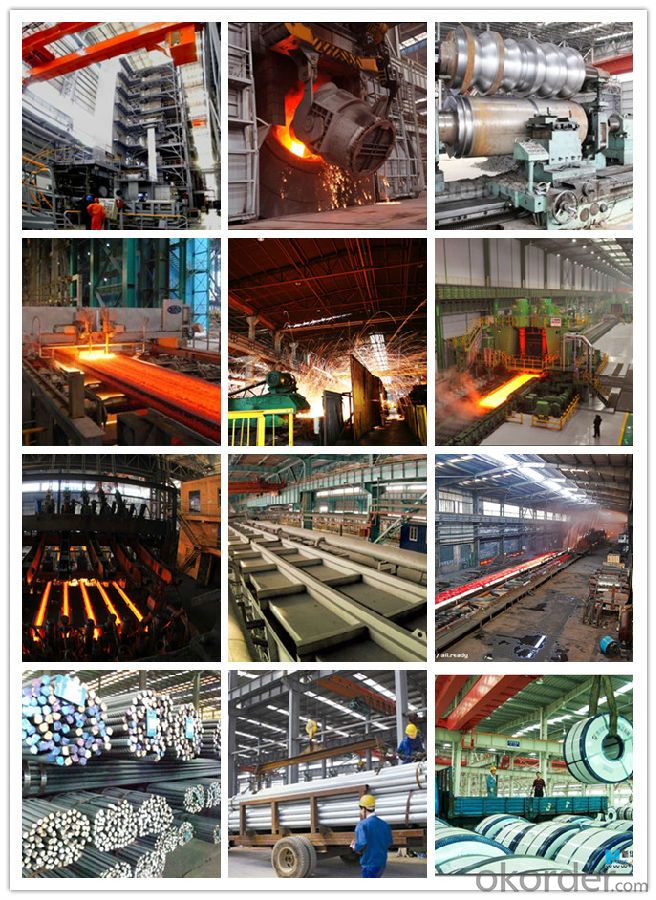
Our service:
-High manufacturing accuracy
-High strength
-Small inertia resistance
-Strong heat dissipation ability
-Good visual effect
-Reasonable price
Chose happens because of quality, then price, We can give you both.Additionally, we can also offer professional products inquiry, products knowledge train(for agents), smooth goods delivery, exellent customer solution proposals.Our service formula: good quality+good price+good service=customer's trust
SGS test is available, customer inspection before shipping is welcome, third party inspection is no problem.
40Cr steel, is a high quality alloy structural steel. The main components are 0.37-0.44 Si 0.17-0.37 Mn 0.50-0.80 Cr 0.80-1.10 C.
40Cr steel is used as a mechanical part and a variety of engineering components and contains one or more of the alloy elements of a certain amount of steel.This kind of steel is suitable for the heat treatment of metal, and the microstructure is uniform, bainite, or very fine pearlite after heat treatment.
So the 40Cr steel with wear consumption, chemical corrosion resistance, tensile strength, high elasticity, high pressure load, wear-resistant high strength, ceiling shock resistance, tear resistance, radiation resistance, high load and shock absorption, good performance.
Import of 40 Cr steel has better elastic recovery performance and better hardness and toughness, wear resistance, machinability is superior.
Used in metallurgy, mines, petroleum, automobile, building materials, sports, heavy machinery, large stamping equipment shock absorbing cushion, cushion block, a spring and a metal plate, pipe punching material mold, general machinery and equipment and other accessories cushion or damping effect is ideal material for mould spring.
- Q: What are the main characteristics of heat-resistant steel forgings?
- Heat-resistant steel forgings have several main characteristics that make them suitable for high-temperature applications. Firstly, they have excellent resistance to oxidation and corrosion, which allows them to maintain their mechanical properties even at elevated temperatures. This resistance is achieved through the addition of alloying elements such as chromium, nickel, and molybdenum, which form a protective oxide layer on the surface of the steel. Secondly, heat-resistant steel forgings exhibit high strength and toughness at high temperatures. This is crucial in applications where the material is subjected to mechanical stress and thermal cycling, such as in gas turbines, power plants, and aerospace engines. The combination of high strength and toughness ensures that the forgings can withstand the harsh operating conditions without deformation or failure. Another important characteristic of heat-resistant steel forgings is their ability to retain their hardness and dimensional stability even after prolonged exposure to high temperatures. This is achieved through a combination of careful alloying and heat treatment processes, which optimize the microstructure of the steel. The resulting material has a fine grain structure and a high degree of uniformity, which enhances its resistance to thermal fatigue and creep. Furthermore, heat-resistant steel forgings have good thermal conductivity, which allows for efficient heat transfer and dissipation. This is particularly important in applications where heat is generated and needs to be managed effectively to prevent overheating and damage to surrounding components. Lastly, heat-resistant steel forgings can be easily machined and fabricated into complex shapes, making them versatile and suitable for a wide range of applications. They can be forged, machined, and welded without any significant loss in their mechanical properties, making them ideal for manufacturing components with intricate designs and high precision requirements. In conclusion, the main characteristics of heat-resistant steel forgings include excellent resistance to oxidation and corrosion, high strength and toughness at high temperatures, dimensional stability and hardness retention, good thermal conductivity, and ease of machining and fabrication. These characteristics make heat-resistant steel forgings essential in industries that require reliable and durable materials in extreme heat conditions.
- Q: How is special steel used in the production of consumer goods?
- Special steel is used in the production of consumer goods due to its superior strength, durability, and corrosion resistance. It is commonly used in manufacturing appliances, cutlery, automotive components, and construction materials, ensuring the end-products meet high-quality standards and have a longer lifespan.
- Q: How does special steel perform in chemical resistance applications?
- Special steel is renowned for its exceptional performance in applications requiring resistance to chemicals. Its unique composition and properties render it highly impervious to corrosion and damage resulting from exposure to various chemical substances. Special steel is crafted using alloys that incorporate elements such as chromium, nickel, and molybdenum, which confer outstanding resistance to acids, alkalis, and other corrosive agents. In the realm of chemical resistance applications, special steel offers multiple advantages. Firstly, it exhibits remarkable resistance to pitting corrosion, a form of localized corrosion that manifests on metal surfaces. This characteristic renders it suitable for usage in environments where chemicals may inflict harm upon the metal surface. Secondly, special steel displays excellent resistance to crevice corrosion, which arises within confined spaces or gaps between metal surfaces. This property proves particularly advantageous in chemical processing equipment, where tight joints and connections are prevalent. Moreover, special steel retains its mechanical strength and integrity even in the harshest chemical environments. It can withstand high temperatures, pressure, and exposure to aggressive chemicals without compromising its structural robustness. This renders it exceedingly reliable and durable, ensuring an extended service life and reduced maintenance costs. All in all, the extraordinary chemical resistance properties of special steel make it the preferred choice for a wide array of applications. Whether employed in chemical processing plants, pharmaceutical industries, or oil and gas refineries, special steel offers the necessary safeguard against corrosion and chemical-induced damage. Its ability to endure harsh environments while maintaining optimal performance over time renders it an ideal material for chemical resistance applications.
- Q: What are the properties of shock-resistant alloy steel?
- Shock-resistant alloy steel is known for its exceptional toughness and ability to withstand high impact and shock loads. It possesses a unique combination of strength, hardness, and ductility, making it ideal for applications in industries such as aerospace, automotive, and manufacturing. This type of steel undergoes specialized heat treatment processes to enhance its shock-resistance, thereby ensuring it can absorb and dissipate energy without fracturing or deforming. Additionally, shock-resistant alloy steel exhibits excellent corrosion resistance and can maintain its mechanical properties even in harsh environments, making it a reliable and durable material for various demanding applications.
- Q: How does special steel contribute to the electronics industry?
- Special steel plays a crucial role in the electronics industry by providing key components and materials that are essential for the manufacturing and performance of electronic devices. It is used in the production of various electronic components including connectors, circuit boards, sensors, and power transmission components, due to its exceptional properties such as high strength, excellent corrosion resistance, and thermal conductivity. Special steel also enables the miniaturization and increased efficiency of electronic devices, enhancing their overall performance and durability.
- Q: What is the role of cobalt in special steel?
- Cobalt plays a crucial role in special steel as it acts as a stabilizing element, improving the steel's strength, toughness, and resistance to corrosion and wear. It also helps in retaining the steel's magnetic properties, making it suitable for applications in the aerospace, automotive, and energy sectors.
- Q: What are the common challenges in casting special steel?
- Casting special steel can pose several challenges due to its unique properties and composition. Some of the common challenges in casting special steel include: 1. High melting point: Special steels often have higher melting points compared to regular carbon steels. This requires the use of specialized equipment and techniques to achieve the required temperature for casting. 2. Alloying elements: Special steels often contain alloying elements such as chromium, nickel, molybdenum, or vanadium. These elements enhance the steel's properties but can also increase the complexity of the casting process. Proper control and understanding of the alloying elements are necessary to ensure the desired mechanical properties in the final product. 3. Oxidation and decarburization: During the casting process, special steel can be susceptible to oxidation and decarburization. The high temperatures and exposure to oxygen can result in surface defects and loss of carbon content, which can compromise the steel's strength and hardness. Careful control of the casting parameters, such as atmosphere and mold design, is necessary to minimize these issues. 4. Shrinkage and porosity: Special steels often have a higher shrinkage rate during solidification compared to regular steels. This can result in shrinkage defects and porosity within the castings. Proper gating and riser design, as well as the use of suitable feeding systems, are crucial to mitigate these issues and ensure sound castings. 5. Thermal stresses: Special steels may exhibit higher thermal expansion coefficients, which can lead to significant thermal stresses during the cooling and solidification process. These stresses can cause cracking and distortion in the castings. Proper design considerations, such as the use of chills or controlled cooling techniques, are essential to minimize thermal stress and maintain dimensional stability. 6. Machinability: Special steels, particularly those with high alloy content, can be challenging to machine due to their hardness and toughness. Casting defects such as inclusions, segregations, or non-uniform microstructure can further complicate the machining process. Proper selection of cutting tools and machining parameters is necessary to achieve the desired dimensional accuracy and surface finish. In summary, casting special steel presents several challenges related to high melting points, alloying elements, oxidation, shrinkage, porosity, thermal stresses, and machinability. Overcoming these challenges requires a thorough understanding of the material properties, precise process control, and the implementation of appropriate casting techniques.
- Q: What are the common challenges in heat treatment of special steel?
- Some common challenges in the heat treatment of special steel include achieving uniform heating and cooling rates, managing distortion and warping, controlling grain growth, and avoiding the formation of undesirable phases or microstructures. Additionally, maintaining tight temperature tolerances, ensuring proper heat transfer within the material, and minimizing the risk of cracking or other forms of damage are also key challenges in the heat treatment process.
- Q: What are the requirements for special steel used in mining equipment?
- The mining industry imposes strict standards on the special steel required for mining equipment due to its challenging nature. Here are some of the essential criteria: 1. Strength and toughness: The mining equipment operates in harsh conditions, enduring heavy loads, impacts, and abrasion. The special steel must possess high strength to withstand these forces and maintain its structural integrity. Additionally, it should exhibit exceptional toughness to prevent fractures and withstand sudden shocks. 2. Resistance to corrosion: Mining operations often occur in corrosive environments, such as underground mines or near water bodies. The special steel utilized in mining equipment should display remarkable resistance to corrosion and oxidation to ensure its durability and prevent premature failure. 3. Resistance to wear: Mining equipment is exposed to abrasive substances, like rocks and minerals, which can cause significant wear. The special steel employed in mining equipment should possess excellent wear resistance properties to endure continuous abrasion and prevent premature deterioration. 4. Heat resistance: The mining equipment frequently experiences high temperatures due to friction during operation or proximity to heat sources. The special steel used in mining equipment should exhibit good heat resistance to retain its mechanical properties and avoid deformation or structural failure. 5. Fatigue resistance: Mining equipment undergoes repetitive and cyclic loading, which can lead to fatigue failure over time. The special steel utilized in mining equipment should possess high fatigue resistance to prevent cracking or failure under these cyclic loading conditions. 6. Weldability and machinability: The special steel employed in mining equipment should have favorable weldability and machinability to facilitate the fabrication and assembly processes. This ensures that the equipment can be easily manufactured, repaired, or modified as necessary. 7. Compliance with regulations: Mining equipment often needs to meet specific regulatory standards and certifications to ensure safety and environmental compliance. The special steel used in mining equipment should adhere to these regulations, guaranteeing the equipment's safe operation and absence of environmental hazards. In conclusion, the requirements for special steel used in mining equipment encompass high strength and toughness, corrosion resistance, wear resistance, heat resistance, fatigue resistance, weldability and machinability, and compliance with regulatory standards. These requirements ensure that the steel can endure the harsh conditions and demanding operations encountered in the mining industry.
- Q: How does special steel contribute to the manufacturing of hydraulic components?
- Special steel plays a crucial role in the manufacturing of hydraulic components by providing the required strength, durability, and corrosion resistance necessary for these components to perform optimally. The unique properties of special steel, such as high tensile strength and excellent machinability, ensure that hydraulic components can withstand high pressure and repetitive movements without deformation or failure. Additionally, the corrosion resistance of special steel helps protect hydraulic components from the harsh operating environments they often encounter, extending their lifespan and reducing maintenance requirements.
Send your message to us
Alloy Steel Cr40,Steel Material,40cr Steel Specification
- Loading Port:
- China main port
- Payment Terms:
- TT or LC
- Min Order Qty:
- 30 m.t.
- Supply Capability:
- 10000 m.t./month
OKorder Service Pledge
OKorder Financial Service
Similar products
Hot products
Hot Searches
Related keywords








